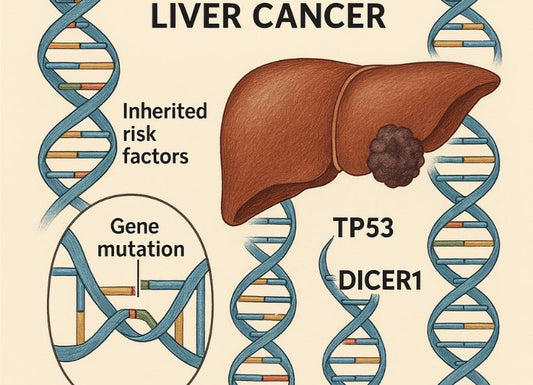Recurring UTIs: Tests, Reasons & Treatment
 Written By
Yusela Aquino
Written By
Yusela Aquino

Recurring UTIs can rapidly become more than just an annoyance – having to constantly experience pain, burning, and itchiness alongside a range of other side effects with no relief could sour anybody’s mood. Urinary tract infections spread when bacteria enter the urinary system, usually through the urethra. Typically, a UTI can be treated successfully with a course of antibiotics and OTC pain relief medication. Recurring UTIs, however, signify a potentially significant underlying cause while also requiring stronger intervention to avoid health complications. Read on for more information on what causes recurring UTIs and how to treat them.
What Is a Urinary Tract Infection? Symptoms and Diagnosis
Urinary tract infections, or UTIs for short, are infections of the urinary system. Most commonly, UTIs develop in response to bacteria entering the urinary tract, typically due to improper hygiene or sexual contact. With time, the bacteria can spread to the bladder, causing further problems.
Other causes of UTIs, such as yeast or viral infections, are less prevalent, though a thorough investigation shouldn’t discount them either.
The most frequent symptoms of a urinary tract infection include the following:
- Pain when urinating
- Lower abdominal sensitivity or pain
- Dark or cloudy urine
- Blood in the urine
- Frequent urination (polyuria)
To diagnose a UTI, doctors order a urinalysis or urine sample test and analyze the urine under a microscope for bacterial presence or letting the bacteria culture grow in a lab environment. If the tests confirm that foreign bacteria were found in the patient’s urine, proper treatment can begin.
In most cases, patients are prescribed a course of antibiotics, such as trimethoprim, fosfomycin, or cephalexin. Adhering to the prescribed medication regimen and introducing better hygiene habits while occasionally supplementing with painkillers when necessary usually prove to be a sufficient treatment for most patients.
Sometimes, however, a urinary tract infection can either never fully clear up or return almost immediately. When that happens, and the infection becomes chronic, further steps have to be taken in order to aid in recovery.
What Causes Recurring UTIs?
Frequently recurring urinary tract infections (UTIs) often result from underlying conditions that make the individual prone to contracting the pathogen. Sometimes, the causes can regularly be anatomical or congenital, while in other cases, provisional remedies suffice to reduce the risk of UTI recurrence.
So, what causes recurring UTIs? See the list below:
Anatomy and Physiology
Women, in general, are more susceptible to frequent UTIs both due to the short distance of the urethra and its proximity to the anus. While the former facilitates the entry of foreign bodies deeper into the urinary tract and bladder, the latter is an inherent risk, as even the smallest amount of fecal bacteria can trigger a UTI.
Additionally, both men and women with structural defects or abnormalities in the pelvic area and urinary tract are at greater risk of contracting UTIs. Bladder diverticula, blockages, and or enlargement can create an acquired predisposition for infections.
Age
Over time, both men and women can develop incontinence and/or become unable to empty the bladder sufficiently. Additionally, women in the post-menopausal stages of their life experience a gradual decrease in the thickness of vaginal tissue, resulting in changes to the bacterial composition, in turn increasing the risk of UTIs.
Sexual Activity
The frequency of sexual intercourse increases exposure to foreign bacteria, which could subsequently be introduced into the person’s urinary tract. In addition, certain forms of birth control, like spermicides or diaphragms, could contribute to a higher risk of infection.
Pelvic Organ Prolapse
Cystocele, or bladder prolapse, could inhibit the body’s ability to empty the bladder adequately. Since proper waste expulsion is a crucial part of cleansing dangerous bacteria from within the body, this could increase the risk of recurring UTIs.
History of Past UTIs
Regular infections of the urinary tract that require antibiotic treatment could help the bacteria acquire resistance against it, making dealing with future infections more difficult.
Autoimmune Diseases
Diabetes, cancer, and kidney diseases, which lower the immune system’s capabilities in fighting off infections, could directly contribute to the frequency or UTIs.
Recurring UTIs – Testing and Treatment
In search of underlying causes, doctors might order a range of tests, like X-ray imaging or an MRI or CT scan of the kidneys and bladder, to test for kidney damage. A cystoscopy (inserting a long, thin tube with a camera) to look inside the bladder may also be necessary for a complete evaluation.
To treat a chronic UTI, doctors prescribe a long course of low-dose antibiotics, which could last from a month to even two years. Patients may also be advised to closely monitor the health of their urinary tract and adopt non-invasive preventative measures. These can include:
- Taking prescribed antibiotics after intercourse
- Relying on at-home remedies for UTIs, such as drinking cranberry juice
- Starting vaginal estrogen therapy after menopause
- Using different birth control methods
The Takeaway
UTIs take a severe toll on one’s health, especially when they seem impossible to get rid of. We hope this article provided you with helpful tips and knowledge about the causes of recurring UTIs and possible treatment options.
Related Resources
Revolutionizing Kidney Health: The Impact of At-Home Kidney Tests
How to Do a Home Test for Urinary Tract Infections (UTI)? A Guide
Bladder Infection: Cystitis. How To Diagnose & Treat It?

Yusela is a medical student with a degree in Biology and a strong foundation in health communication. With experience in both research and clinical settings, she writes clear, evidence-informed content to help patients and caregivers better understand liver health, chronic disease, and transplant care.



